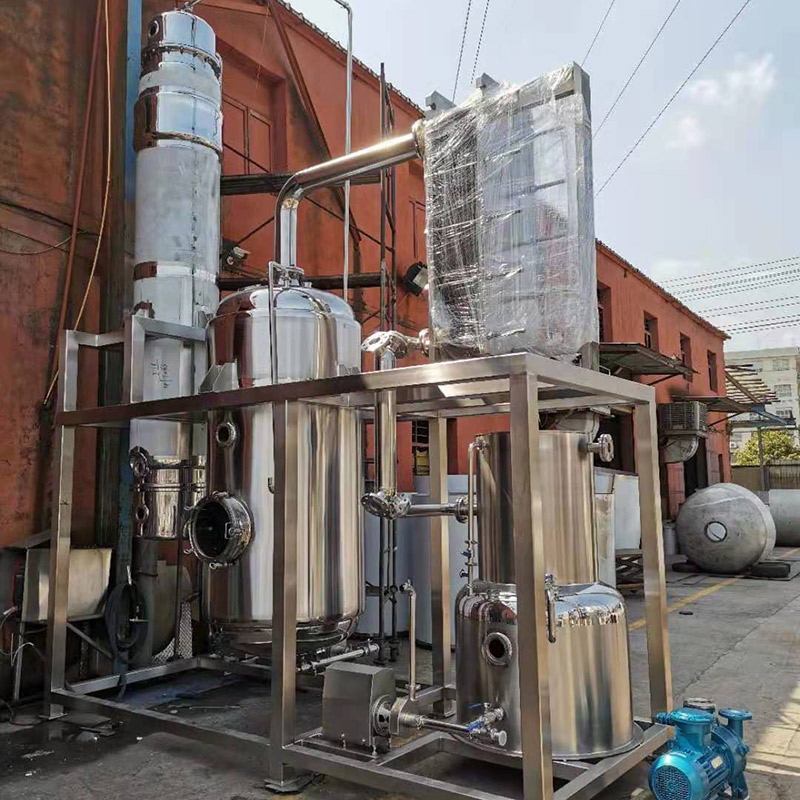
Products
industrial pharmaceutical falling film evaporation concentrator
Evaporator Type
| Falling film evaporator | Used for low viscosity, good fluidity material |
| Rising film evaporator | Used for high viscosity, poor fluidity material |
| Forced-circulation evaporator | Used for puree material |
For the characteristic of juice, we select the falling film evaporator. There are four types of such evaporator:
Parameters
| Item | 2 effects
evaporator |
3 effects
evaporator |
4 effects
evaporator |
5 effects
evaporator |
||
| Water evaporation volume
(kg/h) |
1200-5000 | 3600-20000 | 12000-50000 | 20000-70000 | ||
| Feed concentration (%) | Depend on material | |||||
| Product concentration (%) | Depend on material | |||||
| Steam pressure (Mpa) | 0.6-0.8 | |||||
| Steam consumption (kg) | 600-2500 | 1200-6700 | 3000-12500 | 4000-14000 | ||
| Evaporation temperature (°C) | 48-90 | |||||
| Sterilizing temperature (°C) | 86-110 | |||||
| Cooling water volume (T) | 9-14 | 7-9 | 6-7 | 5-6 | ||
Construction
A double-effect falling film evaporator is composed of following components:
- Effect I / Effect II heater;
- Effect I / Effect II Separator;
- Condenser;
- Thermal Vapor Recompressor;
- Vacuum System;
- Material Delivery Pump: material delivery pumps of each effect, condensate discharging pump;
- Operation platform, electrical control system, pipelines and valves and etc.
Features
1 Best product quality due to gentle evaporation, mostly under vacuum, and extremely short residence times in the falling film evaporator.
2 High energy efficiency due to multiple-effect arrangement or heating by thermal or mechanical vapour recompressor, based upon the lowest theoretical temperature difference.
3 Simple process control and automation due to their small liquid content falling film evaporators react quickly to changes in energy supply, vacuum, feed quantities, concentrations, etc. This is an important prerequisite for a uniform final concentrate.
4 Flexible operation quick start-up and easy switchover from operation to cleaning, uncomplicated changes of product.
5. Particularly suited for temperature-sensitive products.













